An interview with rising star Italian designer Cristina Celestino
Master in the Making
It's no secret that we here at Pamono are big fans of Milan-based architect-designer Cristina Celestino, so it's been such a joy in recent years to watch her career springboard from one success to the next. Celestino lauched her own design brand, Attico Design, in 2010, following the completion of her architecture degree. Since then, she's built up an ever-expanding list of impressive clients, most notably prestigious fashion and design brands like Fendi, Sergio Rossi, Tonelli, Gebrüder Thonet Vienna, Fornace Brioni, and Luisa Via Roma. Among her recent achievements, she won the ELLE DECO International Design Awards in 2017 in the category wallcovering for her Plumage design for Botteganove.
Spellbound by Celestino's unique creative universe, we reached out to her to learn more about her process. Not only did we get the lovely interview that follows, we also got Celestino to take over our Instagram for a few days. How cool is that? Check it out!
Audrey Kadjar: Your interiors are often characterized by oneirism, surrealism, and the charm of the past. What are your main inspirations? Do you see your projects as interconnected elements, all part of the same creative universe?
Cristina Celestino: You can find inspiration everywhere; you just need to know how to catch the ideas. They come from your own background, your education, and your passions. While I do my research, I feel free to explore different fields, from fashion and jewelry to architecture. When I have free time, I visit architectures hidden in Milan and in the countryside, looking for old beauty and new nourishment for my work. Sometimes my references come from nature; the vibes I collect from the colors, materials, and textures that nature has to offer. In this way, I think that my projects are part of the same universe. But my aim is always to do my job to the best of my abilities, using my own design language with a coherence that sets it apart—nothing else.
AK: How does the city of Milan influence your work?
CC: I’m not originally from Milan, but it’s in this city that I started my work in the fields of interior and product design. When I moved to Milan to start a collaboration with Sawaya & Moroni, I immersed myself in the design world, from the companies and designers, to the styling and photography studios and the press. I discovered new motivations to fuel my passion for products and interiors. Milan, with its silent and discreet beauty, was therefore fundamental to my professional career.
I love that Milan is full of illustrious examples of great masters' architectures—all of the subtle use of materials and constructive details from which you can learn so much, like the Palazzo Reale and interiors by BBPR and Franco Albini. I also love to discover the beauty of anonymous Milanese interiors, especially entrance hallways that have a pure, projectual quality. They often showcase unexpected material mixes and unique decorative and architectural solutions.
AK: Thinking about your recent wallcovering collection Giardino delle Delizie, the wall covering project Plumage for Botteganove, and the Happy Room Coffee Table you designed for Fendi in 2016, patterns play a big role in your work. Can you expand a bit on this aspect?
CC: I think that this ever-increasing interest in surface patterns is due to a greater desire for customization and giving personality to interiors. Our houses are becoming more and more representative of ourselves. People now invest more in "clothing" their homes, and even stores and boutiques of different brands are focusing much more often on customized interior projects, preferring this over a repetition of standard concepts. Interiors are always “storytellers,” and they aim to offer to the user a place to live their lives and have personal experiences. Typologies of pattern have a huge aesthetic impact and demonstrate a contemporary sensibility that balance classical design elements.
AK: You designed interiors for luxury fashion brands Fendi and Sergio Rossi. What is your approach to fashion as a designer and architect?
CC: Before working with fashion brands, I used to love fashion itself. It’s one of my main sources of inspiration, because fashion can act without boundaries. I like fashion for its irony and freedom; for its ability to be constantly different from itself. The world of fashion is fast-paced—maybe too fast—but often it's able to create deep content full of ideas and research. I often look at fashion to find inspiration, for example, when comes to the color palette. Also, I have always been fascinated by leather goods, especially bags, which for me look like micro-architectures.
I have been collaborating with historical fashion brands, like Fendi and Sergio Rossi, that hold archives full of years of research and innovation. So I work with them by mixing my personal design language with my reinterpretation of the brands' stylistic codes. One thing that becomes really obvious when you work with fashion brands is that they take decisions very quickly and with bigger outcomes; they are willing to be much more daring than furniture brands.
AK: Your work involves both interior projects and furniture pieces. How do you view the relationship between the two?
CC: I think that the furniture is fundamental to the characterization of space overall. Both a commercial space and a home cannot be complete without the consideration of all the elements of furniture. In an interior design project, I feel free to express my vision as much as possible. When I think of a product, I always start from a story and from a space where the object is placed. In the interiors, I really like playing with the textures, colors, the materiality, and the different finishes. Both interior projects and furniture have to be coherent—not only functional but also narrative and evocative. I believe that the past is inexorably part of the future but must be interpreted with originality and personality to have value.
AK: How does your design brand Attico Design relate to your other projects? How do you find a balance between working on your own brand and responding to collaborations?
CC: Attico Design is my own brand; every piece I design is handmade by expert Italian artisans with whom I have a never-ending dialogue (thanks to which I continue to learn a lot about my job). Production is always made in small series, often customized according to customers' requirements. With Attico, I can choose and organize the production time by myself and be the creative and business mind behind every step—from the photo shooting to the marketing.
AK: You recently designed the interior of the luxury store LuisaViaRoma in Florence to celebrate the holiday season. How was this project born?
CC: The goal of the project was to transform the space into a holiday home that is intimate and welcoming. The furniture, mostly pieces that I designed for various companies, is interactive and enriches the experience rather than just taking up space. I was inspired by Carlo Mollino’s interiors, where materials, textures, and colors play surreally with bourgeois furnishings and typologies. Another inspiration for this project was the work of the American decorator Dorothy Draper, who used color, patterns and historical decorative elements in a daring and ironic way.
AK: Do you collect design at home? What are your top tips for decorating?
CC: I collect pieces, some rare, that I like to use in my home. They are mainly Italian design pieces from the 1950s to the 1970s and most of them are lamps.
I really love a spontaneous mix of different items that come from my vintage design collection, from my own work prototypes and some new pieces that I love. This kind of combination brings about an interior that is very intimate, sophisticated, and personal. Home is the place that reflects my idea of domestic beauty. I try to surround myself with things that I find beautiful and lovely without particular rules and schemes. And indeed I often change the interior set up or add some new pieces. The domestic atmosphere is something very delicate, created by a very subtle equilibrium between decoration, color, voids, and stories projected by objects from different periods.
AK: Who are your favorite designers and artists?
CC: There are so many masters. My first masters, from the time of my university studies, are Le Corbusier and Carlo Scarpa. Then I became passionate about Ettore Sottsass, Gino Sarfatti, and Caccia Dominioni , just to mention a few. But I admire so many for works that are extremely contemporary, smart in all their aspects. I also I admire artists who first tried to go beyond the canvas, putting the artwork in relationship with space, like Lucio Fontana and Agostino Bonalumi.
AK: What are your future projects?
CC: I will show a lot of new projects, both interiors and product design, during the next Milan Design Week. As regards interior projects, one is more related to the residential field, focused on flooring and wallcovering materials, while the other is more related to hospitality. Another interior project is a new cocktail bar that will open in May 2019 inside a brand new hotel in Venice. And I always have personal projects that I'm developing.
-
Text by
-
Audrey Kadjar
Born in the US to a French family, Audrey grew up in multiple countries. Before landing at Pamono, she studied art history in London and worked in the cultural industry. When she's not working at Pamono, she can be found pursuing art and photography projects.
-
More to Love
Large Rounded Obei Oblor Mirror by Cristina Celestino - Attic for Atypical

Obei Obei Wall Mirror by Cristina Celestino - Attic for Atypical
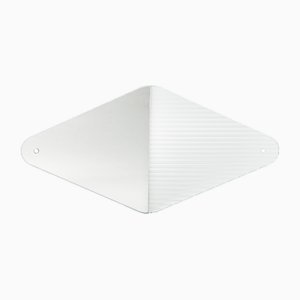
Miuccia Jug by Cristina Celestino for Atypical

Small Miuccia Jug by Cristina Celestino for Atypical
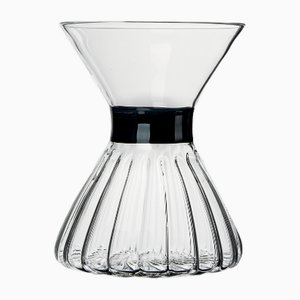
Obei Wall Mirror by Cristina Celestino for Atypical

Plumage Hand-Decorated White & Green Vase by Cristina Celestino for BottegaNove

Plumage Blue & Gold Hand-Decorated Vase by Cristina Celestino for BottegaNove
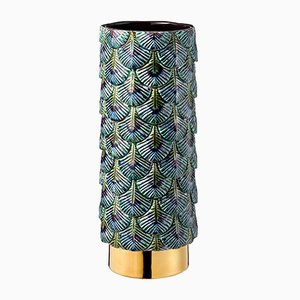
Plumage Hand-Decorated Black, Orange & Gold Vase by Cristina Celestino for BottegaNove
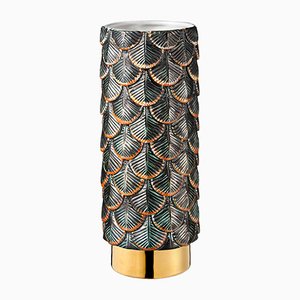
Plumage Hand-Decorated White & Black Vase by Cristina Celestino for BottegaNove
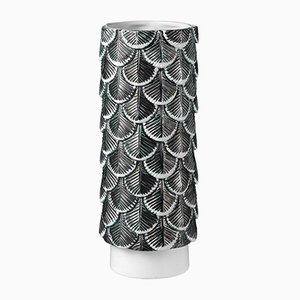
Plumage Hand-Decorated Blue & Gold Vase by Cristina Celestino for BottegaNove

Plumage Hand-Decorated Multi-Colored Vase by Cristina Celestino for BottegaNove
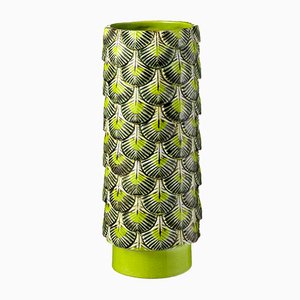
Plumage Hand-Decorated White & Gold Vase by Cristina Celestino for BottegaNove
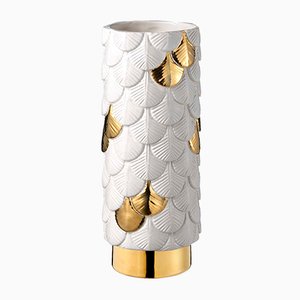
Plumage Hand-Decorated Black & Gold Vase by Cristina Celestino for BottegaNove
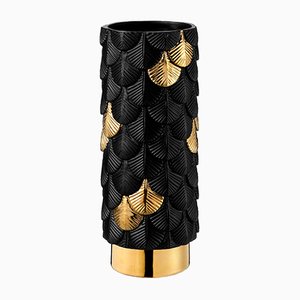
Plumage Hand-Decorated Grey and Pink Vase by Cristina Celestino for BottegaNove

Plumage Hand-Decorated Multi-Colored Vase by Cristina Celestino for BottegaNove

Plumage Hand-Decorated Pink Matt Satin and Luster Vase by Cristina Celestino for BottegaNove
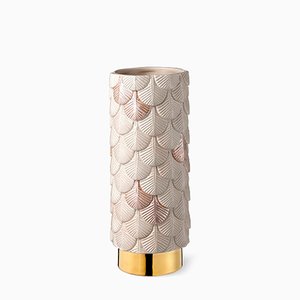
Plumage Hand-Decorated Green, Orange, and Gold Vase by Cristina Celestino for BottegaNove

Plumage Hand-Decorated White and Blue Faded Vase by Cristina Celestino for BottegaNove
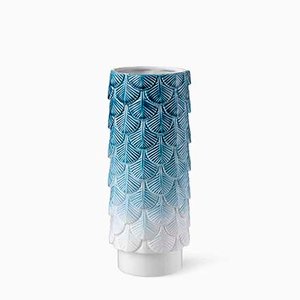
Plumage Hand-Decorated White and Pink Faded Vase by Cristina Celestino for BottegaNove
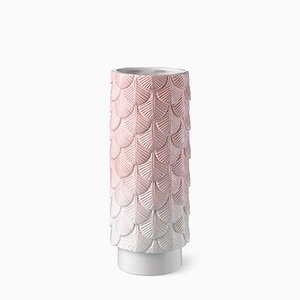
Plumage Hand-Decorated Black Gloss and Luster Vase by Cristina Celestino for BottegaNove
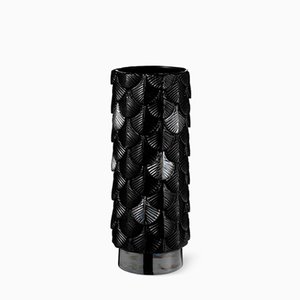
Plumage Hand-Decorated Black Satin & Gold Vase by Cristina Celestino for BottegaNove
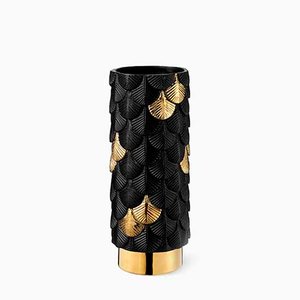
Small Parure I Glass Bowl in Gray by Cristina Celestino for Paola C.
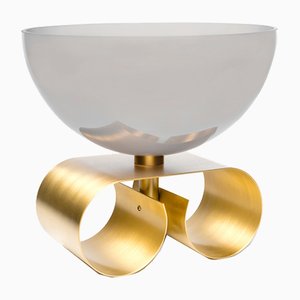
Small Parure I Glass Bowl in Pink by Cristina Celestino for Paola C.

Large Parure II Glass Bowl in Light Blue by Cristina Celestino for Paola C.

Large Parure II Glass Bowl in Blue by Cristina Celestino for Paola C.


